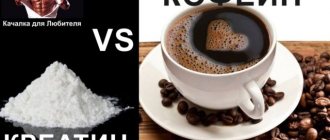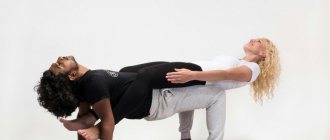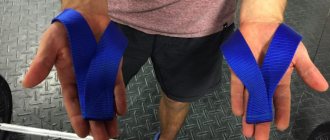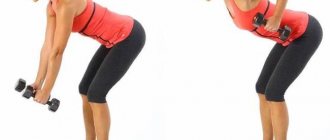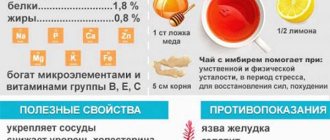The legendary Cooper test is widely used to determine the preparedness of athletes and people of certain professions. Many people have already tried this on themselves. Next, you will learn how to perform various variations of the test and standards by which you can test yourself and determine your level of preparedness.
Using this method, you can determine the level of your capabilities at any age, with some limitations, but more on that later. The fact is that each organism is individual: some people are developed in strength exercises, others are flexible and mobile, but are incapable of a strong jerk.
About the Cooper test
The Cooper test is several tests for the level of physical fitness and assessment of a person’s physical condition, united by a common name. The author of simple and functional tests is the American scientist-doctor Kenneth Cooper. The endurance tests were developed in 1968 for soldiers in the US Army.
The testing program contains about thirty tests, among which the most popular are running, swimming and cycling. Cooper's endurance tests are designed for people under 35 years of age. However, this does not mean that older people cannot find out their fitness level. Adequate physical preparation and following the test recommendations will help reduce health risks.
Cooper tests are aerobic in nature. This means that all cells in the body make maximum use of the oxygen they contain. This type of exercise eliminates oxygen starvation of the body and can be used by people with poor health. When performing all types of Cooper tests, about two-thirds of a person's muscles are involved. As a result of the load, the muscular system, as well as the respiratory and cardiovascular systems, are affected.
What does the Cooper test consist of?
Cooper's endurance tests are simple to perform but provide a comprehensive picture of a person's physical condition. A variety of Cooper tests are widely used in training young men for special forces. For an average person of average physical fitness, a running test would be most appropriate.
To conduct Cooper's running tests, all you need is a stopwatch and a flat treadmill.
The test consists of:
- Mandatory warm-up;
- Running/swimming or cycling part (12 minutes of work);
- Cool downs.
Additional factors that may affect the test result are temperature and humidity.
Next, you will learn how to prepare for the test to achieve maximum results.
Warm up before the test
To perform at your best and avoid health problems, be sure to warm up before the test. Warming up is an important condition before starting any type of testing, be it running, swimming or cycling. The time for warming up is individual for everyone. On average, 3 to 15 minutes may be sufficient.
It is important to remember that warm-up exercises are designed to prepare the muscles and body systems for the test, and not to tire you out ahead of time.
Running warm-up
- Walking at a fast pace around the stadium for 2-3 minutes;
- 30 seconds jogging
- 30 seconds walking at a fast pace;
- Repeat steps 2 and 3 5 times.
Next, you need to warm up your muscles with general strengthening exercises and stretching.
Exercises to warm up muscles
- fold your hands into a “lock” and move them behind your head as far as possible, then try to touch your shoulder blades with your hands;
- lie on your back and rise up without using your hands;
- bend forward and backward, and twist your torso to warm up your back muscles;
- Feet together. Knee rotation clockwise and counterclockwise;
- do squats to alert the muscles of the lower legs and thighs;
- Do a few push-ups to work the muscles in your arms and shoulders.
How to perform the Cooper test
After the warm-up, which is the first stage of passing the test, the test itself begins.
The Cooper Running, Swimming and Cycling Test consists of running for 12 minutes.
Run
After the command “Start!” The subject begins to move on a flat treadmill. While passing the test, you can move to a step, but then it is unlikely that you will be able to pass the test with a good result. At the end of the time, the distance that the runner managed to cover is measured. The test result is correlated with a table of standards, after which a conclusion is drawn about the level of physical fitness of the test subject.
Swimming
The Cooper Swimming Test is conducted in a similar manner. The distance that a freestyle swimmer will cover in 12 minutes is taken into account and compared with the standard table.
Bike
It is advisable to carry out the Cooper cycling test in calm weather in the absence of wind and rain in order to minimize the influence of the environment on the athlete’s results. The test route must be flat, without ups or downs. The distance covered in 12 minutes is compared with the standard table.
12 minute swim test
The 12-Minute Swim Test evaluates the body's fitness level based on the distance (in meters) a person can swim in 12 minutes. The swimming style during the test is free. This Kenneth Cooper test is best done in a swimming pool, where it is easier to measure the distance covered. During testing, you can take rest breaks, during which the stopwatch continues to count 12 minutes. The more breaks, the worse the test result will be.
Cooper 12-Minute Swim Test Physical Fitness Score Chart
| Physical fitness | Distance covered, m | |||||
| Girls 13-19 years old | Women 20-29 years old | Women 30-39 years old | Boys 13-19 years old | Men 20-29 years old | Men 30-39 years old | |
| very bad | < 350 | < 275 | < 225 | < 450 | < 350 | < 325 |
| bad | 350-450 | 275-350 | 225-325 | 450-550 | 350-450 | 325-400 |
| satisfactory | 450-550 | 350-450 | 325-400 | 550-650 | 450-550 | 400-500 |
| good | 550-650 | 450-550 | 400-500 | 650-725 | 550-650 | 500-600 |
| excellent | > 650 | > 550 | > 500 | > 725 | > 650 | > 600 |
Cooldown after Cooper test
Cooling down for any physical activity is just as important as warming up before swimming or running. Your heart will thank you for treating it with care and restoring your heart rate by gradually reducing the load. After running or cycling, just walk or jog for 5 minutes. After swimming, as a cool-down, you can swim 200-300 meters at a comfortable pace.
How to do a workout
Always warm up before every workout. Then comes the aerobic phase. In this
phase, you perform the types of load that you have chosen. For example, running or walking. You will get the desired health effect by exercising for at least 20 minutes a day, 4 times a week. Good - 40-60 minutes.
By working out three times a week, you should ensure an increase in your aerobic capacity. In four sessions you will receive even more significant improvements in your health.
But even good things have their limits. It is absolutely not necessary to study five or more times a week. It is dangerous when heavy physical activity occurs seven times a week
. You need to alternate between easy and difficult days. There is no need to force yourself to work hard every day, because accumulated fatigue can lead to injuries to muscles, joints, bones and deterioration of health.
Cooper test standard tables
For each type of test, Kenneth Cooper developed appropriate standards taking into account the age and gender of the subject. Using standard tables, you can assess the physical condition of men and women from 13 to 39 years old. Distances in the tables are indicated in meters.
Running standards table
Runners' fitness levels range from very poor to excellent.
Table of standards in swimming
The Cooper Swimming Test Standards Chart also lists six categories of test subjects, each with a level of physical condition ranging from poor to excellent.
Table of standards for cycling
The test standards for cycling differ from those for running or swimming only in the length of the distance that the test taker must cover.
Having determined the level of your physical fitness, you can proceed to calculating an important indicator - maximum oxygen consumption (MOC). Read about it further.
12 minute running test
The Cooper 12-Minute Run Test evaluates the body's fitness based on the distance (in meters) a person can run (or walk) in 12 minutes. It is assumed that the person is running throughout the test. If the test taker cannot cope with this requirement, you can go to a step, the stopwatch counting down 12 minutes does not stop. The longer a person walks rather than runs while performing the test, the worse the test result. After a 12-minute movement, the distance covered in meters is measured and physical fitness is assessed using the table.
Cooper 12-Minute Running Test Physical Fitness Assessment Chart
| Physical fitness | Distance covered, m | |||||
| Girls 13-19 years old | Women 20-29 years old | Women 30-39 years old | Boys 13-19 years old | Men 20-29 years old | Men 30-39 years old | |
| very bad | < 1600 | < 1550 | < 1500 | < 2100 | < 1950 | < 1900 |
| bad | 1600-1900 | 1550-1800 | 1500-1700 | 2100-2200 | 1950-2100 | 1900-2100 |
| satisfactory | 1900-2100 | 1800-1900 | 1700-1900 | 2200-2500 | 2100-2400 | 2100-2300 |
| good | 2100-2300 | 1900-2100 | 1900-2000 | 2500-2750 | 2400-2600 | 2300-2500 |
| excellent | 2300-2400 | 2100-2300 | 2100-2200 | 2750-3000 | 2600-2800 | 2500-2700 |
| excellent | > 2400 | > 2300 | > 2200 | > 3000 | > 2800 | > 2700 |
What is MIC and how to calculate it
Maximum oxygen consumption (MOC) is the maximum amount of oxygen expressed in milliliters that a person can consume in one minute. The result of the Cooper running test is used in the formula for determining MOC:
MPCml/min/kg=distance (m)-50545
MPC allows you to get an idea of the level of aerobic performance of the body. VO2 directly affects the average speed of an athlete:
- The higher the oxygen consumption rate, the faster the heart will pump blood through the veins;
- The faster the heart pumps blood, the more often the muscles receive nutrients;
- The more often muscles receive nutrients, the better they work;
- The better the muscles work, the greater the distance the athlete will cover.
MOC indicators differ for men and women. The age of the athlete also affects this indicator.
Average BMD of women
Average MPC for men
Tips for Successfully Passing the Cooper Test
The main condition for successfully passing the test is good health. Testing is stopped immediately if during the test the person feels:
- arrhythmia;
- tachycardia;
- dizziness;
- weakness;
- pain in the heart area.
Testing is not recommended frequently. After passing the test, avoid additional training and physical activity - give your body a chance to recover. Immediately after the test, it is forbidden to go to the sauna or take a hot shower to avoid overheating.
The following recommendations will allow you to avoid common mistakes when taking the Cooper test:
- Use a heart rate monitor to monitor your heart rate;
- Follow the correct running, swimming and pedaling technique;
- Run, swim or ride at a steady pace;
- Watch your breathing, don't talk;
- If necessary, use running knee pads and warming ointment for your joints.
Sequence of the training process
Kenneth Cooper's four phases of aerobic training that you must adhere to:
- Warm up. To avoid muscle strains and tears, you should never ignore warming up. It warms up the muscles of the back and limbs, and also increases the heart rate, preparing the heart for intense exercise. Warm-up should be light so as not to overload the body. General developmental exercises aimed at all muscle groups are perfect.
- Aerobic phase. Achieving a healing effect occurs precisely in this phase. It performs selected loads, the volume of which depends on the type of activity and its intensity. For example, in the most active aerobic sports (skiing, running, swimming and cycling), a healing effect is achieved if you exercise for at least 20 minutes 4 times a week. But it would be best to follow the points system and exercise at least 3 times a week (that is, dividing 30 points into two, or even more so one workout per week, is extremely undesirable, and is contraindicated for people over 40 years old). Everyday training does not contribute to your health, and if you exercise 5 times a week, then it is best to alternate easy and difficult days.
- Hitch. To smoothly reduce your heart rate, you must continue to move at a slow pace in the third phase of aerobic exercise. The duration of the phase must be at least 5 minutes.
- Power load. This phase includes exercises that strengthen muscles and develop flexibility. It should last at least 10 minutes. Strength training and exercises with weights of various types are perfect. They will increase the strength of bones and joints.
